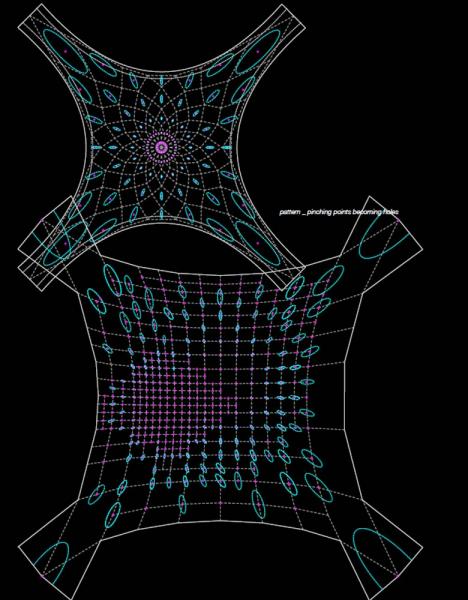
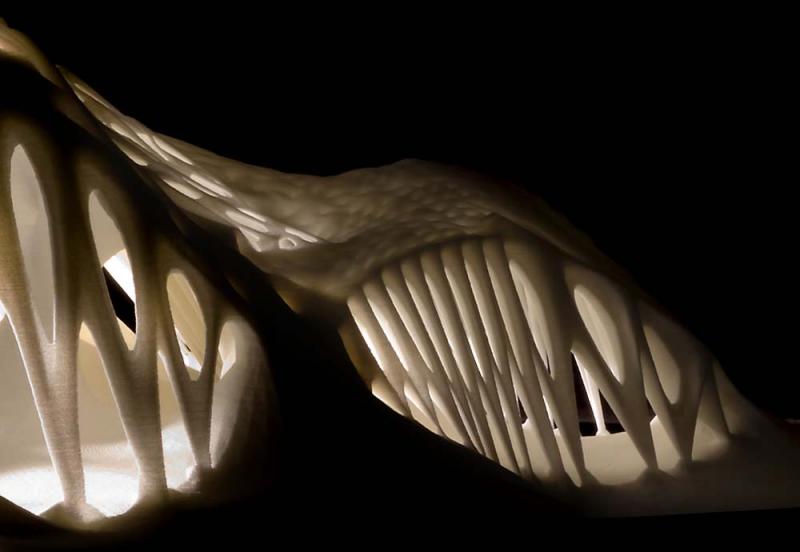

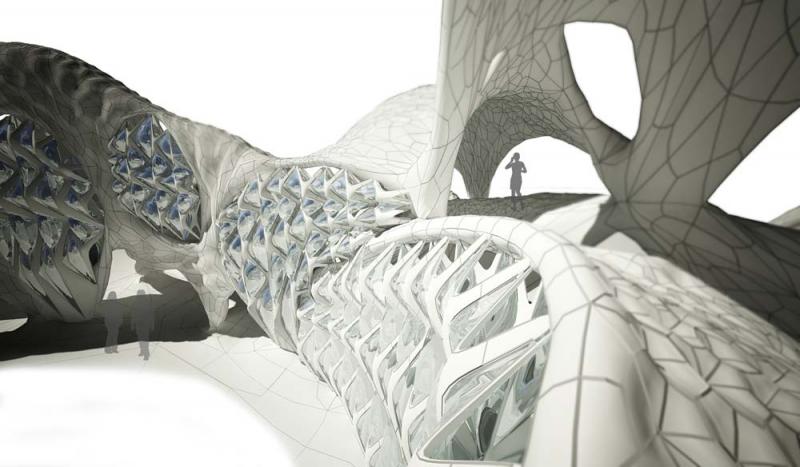
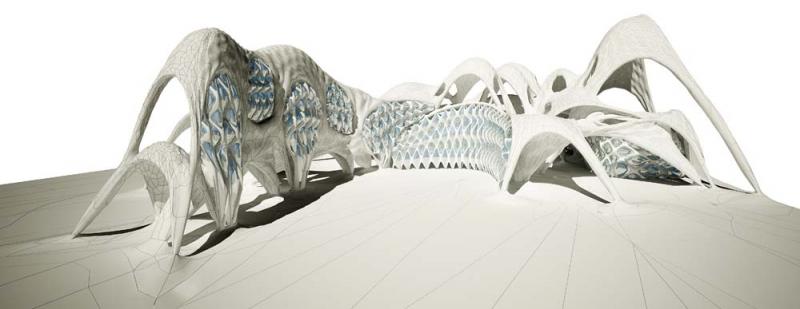

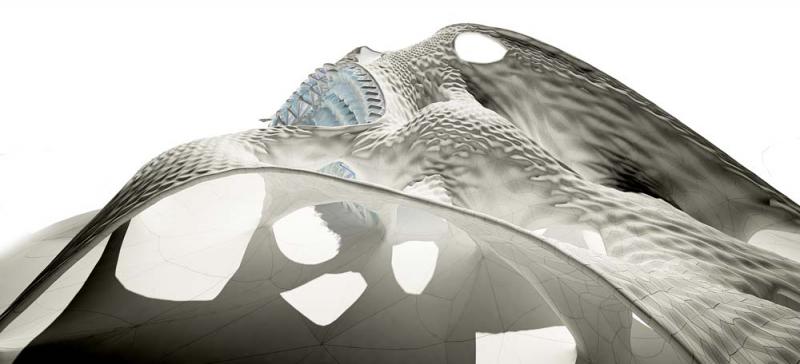
Digital Plaster
Tutor: Theodore Spyropoulos
Team: Claudia Ernst [ Germany ] Manuel Jiménez García
[ Spain ] Roberto García [ Spain ] Stella Dourtmes
[ Greece ]
What is the significance of digital materiality in the design process?
Through our thesis we establish a prototypical system of analogue
and digital integration, thus creating a ‘circular causality’ of constant
reciprocal feedback that informs pattern as the objective of our
design process.
Our research investigates a system of formation and spatial configuration
based on the study of form-finding through cast plaster
in flexible formwork. This control system uses the methodology of
patterning to negotiate the relationship between pattern, structure
and space. The dynamic simulation of our material system enables
us to evaluate structural performance, material distribution and fabrication
technique, providing the design system with the necessary
information to optimise the pattern.
The patterning of prototypical spatial configurations is based on a
generative system of a network of self-organising catenaries that
are able to adapt to specific conditions, there by hybridising different
scales and densities of space.
In this way, we realise the potential to deliver a fabric pattern that
becomes architectural space once it is cast through a time-based
deployment of a phase-changing material.